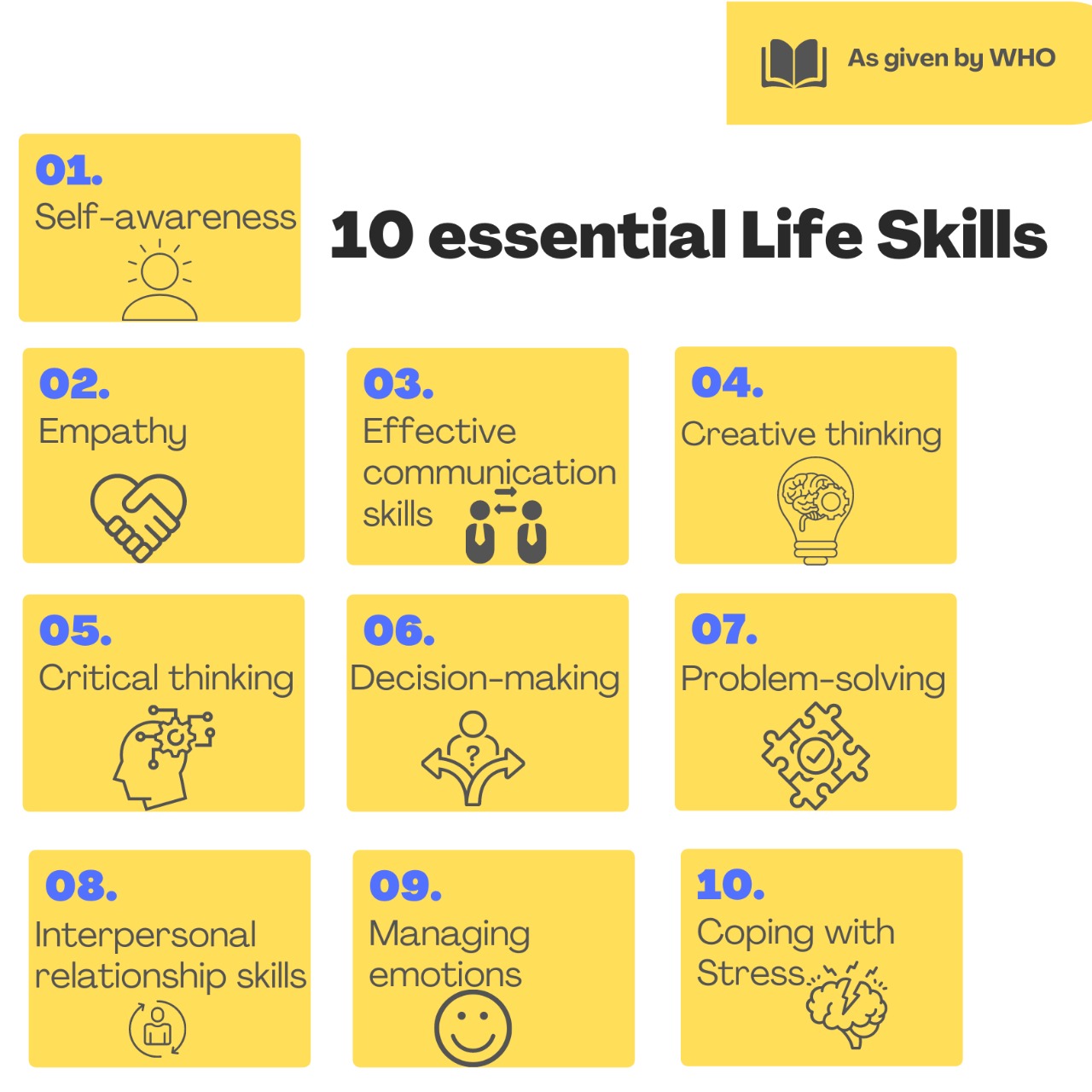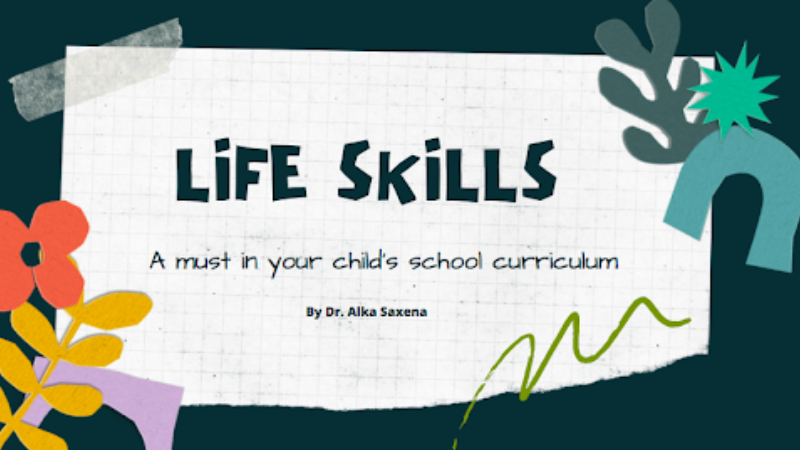
- by Dr. Alka Saxena
- | Views :405
- Read :
Holistic Development through Life Skills
Anika, who is 4 years old, recently learned to help her mother during dinner time. Sasha, who just turned 10, now wants to start a group of Toastmasters in her society. Jay has been able to build a shelter home for street dogs near his home, along with some other teenagers.
What a promising future we have with such children around us, don’t we?
The famous professor Jess Lair rightly said – “Children are not things to be molded, but people to be unfolded” and this is where learning essential life skills from their environment comes into action.
Defining Life Skills/ Life Skills- The Essential Lessons
The WHO defines “life skills as the abilities for adaptive and positive behavior that enable individuals to deal effectively with the demands and challenges of everyday life”.

Different life skills serve us in different situations. These skills are crucial for children to learn and grow.
Making life skills the way of life
Children learn life skills from their environment, parents, family, and teachers. Children begin to imbibe these skills at home and this progression continues in school. All these stakeholders can do a lot to actively inculcate life skills in children. Basic chores are a good example for teaching children various life skills.
The responsibility of simple chores like clearing the table or preparing their bags and uniforms before school can help children acquire life skills like empathy, self-awareness, problem-solving, decision-making, and effective communication.
Nowadays, with busy schedules and protective parenting, children do not get as many opportunities to learn life skills. They are spoon-fed solutions instead.

Adapting & Adopting
How can we ensure that our children learn the necessary skills needed for living? Schools are becoming increasingly important in this regard. They can develop life skills by integrating them with the regular curriculum.
A small step to start with is to have teachers embody life skills, which the students can model. Life skills can be connected with every situation and subject that students learn at school, including sports and studies.
Integrating Life Skills in the Curriculum
History has taught us many lessons, but it can also be used for teaching empathy. Examples of war and genocide show the disastrous consequences of lack of empathy. Teachers can use these to help children imagine the conditions that existed in the past.
One way to encourage creative thinking is to explain geographical features of a continent and then ask children to guess various kinds of foods eaten there. This would help them relate geographical conditions to agriculture and food habits in an innovative way.
Examples of life skills and opportunities to teach them are numerous. Every subject can be used to inculcate some or the other life skill. Languages help children develop interpersonal skills and effective communication by encouraging writing, reading, and interactive activities.
Science allows students to explore with curiosity, indulge in problem solving, and develop scientific temper. While most people associate creative thinking with artistic pursuits, it is important to note that creative thinking is present everywhere in science. Had scientists not encouraged creative thinking, we would not have had inventions like the wheel, the airplane, or electric cars. Students also learn resilience and perseverance from the stories of strong men and women who had spent endless time in pursuit of their dreams.
Group projects, Artistic Endeavours, and Tools for Holistic Learning
Self-awareness attains importance in teamwork. Self-awareness and interpersonal communication allow students to best use their skills in group work. Group projects at school are a good way to learn teamwork, decision-making, and cooperation. Drama, dance, music, and art not only allow students to channelize but also experience and identify emotions. Identification and naming of emotions are crucial in the process of managing them. Schools can aid this by encouraging young children to identify and express their emotion through various class activities.
These days yoga, sports, and meditation are increasingly becoming an integral part of the school curriculum. This helps the students in managing stress and increasing concentration. Sports are also helpful in learning critical thinking, self-awareness, and effective communication. Thus, schools today have all the tools to aid holistic learning.
Ensuring a Bright Future
Simple steps can help ensure that our children learn the skills needed for living. Positive and adaptive behavior can lead to a better and fruitful life. Schools are key stakeholders in the future of their students. The integration of life skills, with the school curriculum, can ensure that their future is bright.
We live in an increasingly dynamic world. While advancements in technology have brought us numerous benefits, they are also the carriers for new challenges and stressors. The illustration of life skills, using school curriculum, can enable students to deal with these challenges effectively.
The impact of life skills education in our life is immense. To make our children’s future bright, we will have to ensure that life skills become the way of life.
I hope you liked the article. Just drop in a comment and let us know what you feel is important for the development of an individual, and which life skills can be added to the list.
Good evening ma’am
Great going ma’am
Interesting read!
Addition of these skills in the school curriculum is the way ahead. These are an absolute way to build mental and emotional strength for our digital generation.
So well written.
Good evening ma’am.Wonderful explanation about the importance of Lifeskills for children
A great guide for young mothers. way to build mental and emotional health of children. Great going.
Insightful read ma’am. Thanks for sharing.
Very well written ma’am!
Good evening Ma’am
Very well written draft
I will join the session
Good morning ma’am. Thank you for this excellent post.
Provided good insight.👍
Relevant and very useful information, thank you for sharing.
Its an very useful information for everyone. Beautifully explained.
When schools & homes work in tandem -imbibing life skills becomes a breeze. 🙏🏽
Very Insightful. Thank you for sharing your thoughts!
Insightful, Thankyou for sharing
Very informative. It’s true that life skills will help brighten children’s future.
Very insightful and informative. Thanks for sharing ma’am.